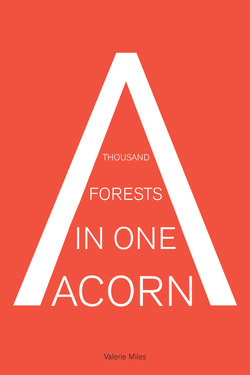Читать книгу A Thousand Forests in One Acorn - Valerie Miles - Страница 30
На сайте Литреса книга снята с продажи.
ОглавлениеThe life of Carlos Fuentes could write itself on a world map. Born in 1928 in Panama City, where his father, a member of the Mexican diplomatic core, was assigned at the time. He received a cosmopolitan education, attending prestigious prep schools in Ecuador, Uruguay, Brazil, and Washington, D.C., where his family moved in 1933, contributing to his early bilingualism. During those years, his father Rafael and his mother Berta made sure that he spent all his summer vacations in Mexico, in the care of his grandmothers, to whom he owes his mother tongue and the first books he read. As he said on one occasion, “I learned to imagine Mexico before being a Mexican.” After a few years, they left Washington, D.C., this time heading to Chile.
In 1944 they moved to Buenos Aires. The Nazi environment and the proliferation of anti-Semitic prejudices present in Argentine schools in those years prompted the young Fuentes—supported by his parents—to abandon his studies. Throughout his life, political and social engagement were to be fundamental characteristics of his intellectual trajectory: “What a writer can do politically he should also do as a citizen.” Far from the classroom, the memory of those years nourished him, as well as his discovery of Borges and the tango.
At sixteen, Carlos Fuentes settled in Mexico, where he pursued his studies and maintained an active and sophisticated social life. Finishing his bachelor’s, he debated between his passion and the duty to pursue a “healthy” university degree. In the end, he would follow the advice of Alfonso Reyes: “You should become a lawyer, an attorney; then, you’ll be able to whatever you most enjoy, like I did.” So, while finishing law school (and having spent two years in Europe taking classes in International Studies), he finally resolved to become a writer.
In 1954 he published his first book, Los días enmascarados, comprised of six fantastic stories. In the following years, he founded and edited the Revista Mexicana de Literatura with Emmanuel Carballo while finishing his novel La región más transparente, which was published in 1958 to great praise; the variety of resources the writer used to give voice to a whole society, to express the desires of its inhabitants, their thoughts, and their vices, were early indications that with time Carlos Fuentes would be one of the most recognized novelists of the Spanish language. Then he got married to Rita Macedo, one of Luis Buñuel’s favorite actresses. It was actually in the decrepit mansion of the film producer Manuel Barbachano Ponce where Carlos Fuentes and Gabriel García Márquez—“there during the heat waves of 1961”—had their first encounter. The Mexican writer has since stated, “we were friends forever, to such an extent that I can mark out the stages of my life after my thirty-second year using the milestones of my friendship with Gabo.”
“1962 was the fullest year of my life, when I best loved, wrote, struggled . . .” Aura and La muerte de Artemio Cruz appear, confirming Fuentes as one of the great literary voices of the moment, and around the same time, his first daughter, Cecilia (his Fuentecita), was born. A year later, Gallimard published La región más transparente (La plus limpide région), thus initiating a lasting relationship between Fuentes and Paris, where that same year he met Julio Cortázar, Mario Vargas Llosa, Juan Goytisolo, and Jorge Semprún. In the end he decided to take up residence in Europe (Rome, Paris, Venice, London), involving himself in the social movements alive throughout the continent at that time. After divorcing Rita Macedo, he married the renowned journalist Silvia Lemus, with whom he had two children, Carlos and Natasha (both sadly deceased). The family lived a constant coming and going between France and the United States, where the writer developed a prolific academic life. It was precisely his interest in language, in the American continent, that lead him to write his most ambitious project, Terra nostra (1975), “a response to the loss of the narrative subject, of the psychologically complete character, torn to shreds by the brutality of the twentieth century’s heartless history.” The book won the Premio Rómulo Gallegos in 1977, for many readers and critics it is considered one of the pillars of Latin American literature in the twentieth century.
In 1987 he won the Premio Cervantes and his writing continued to shift between channels of realism, fantasy, and the psychological perspective. All of his literary obsessions are melded together in El naranjo, o los círculos del tiempo (1993), a synthesis representative of his body of work in which he closes his narrative cycle “La edad del tiempo.” Sadly, as the pages of this anthology were being finalized, Carlos Fuentes passed away in Mexico May 15, 2012. A few days before his death, the writer completed two posthumous works: Federico en su balcón and Personas. In 1994 his work had taken a turn with the publication of Diana o la cazadora solitaria. The book presents a loving relationship between the writer and the actress Jean Seberg, years after her death in Paris.
Now in the new century, his novels Adán en Edén (2009) and Vlad (2010) have come to expand a body of work capable of incorporating neologisms into a language that is always alive and colloquial, confirming Carlos Fuentes as one of the most important writers in all of his country’s literature, able to continue enriching Mexican letters with the greatest resources of the European vanguards.
